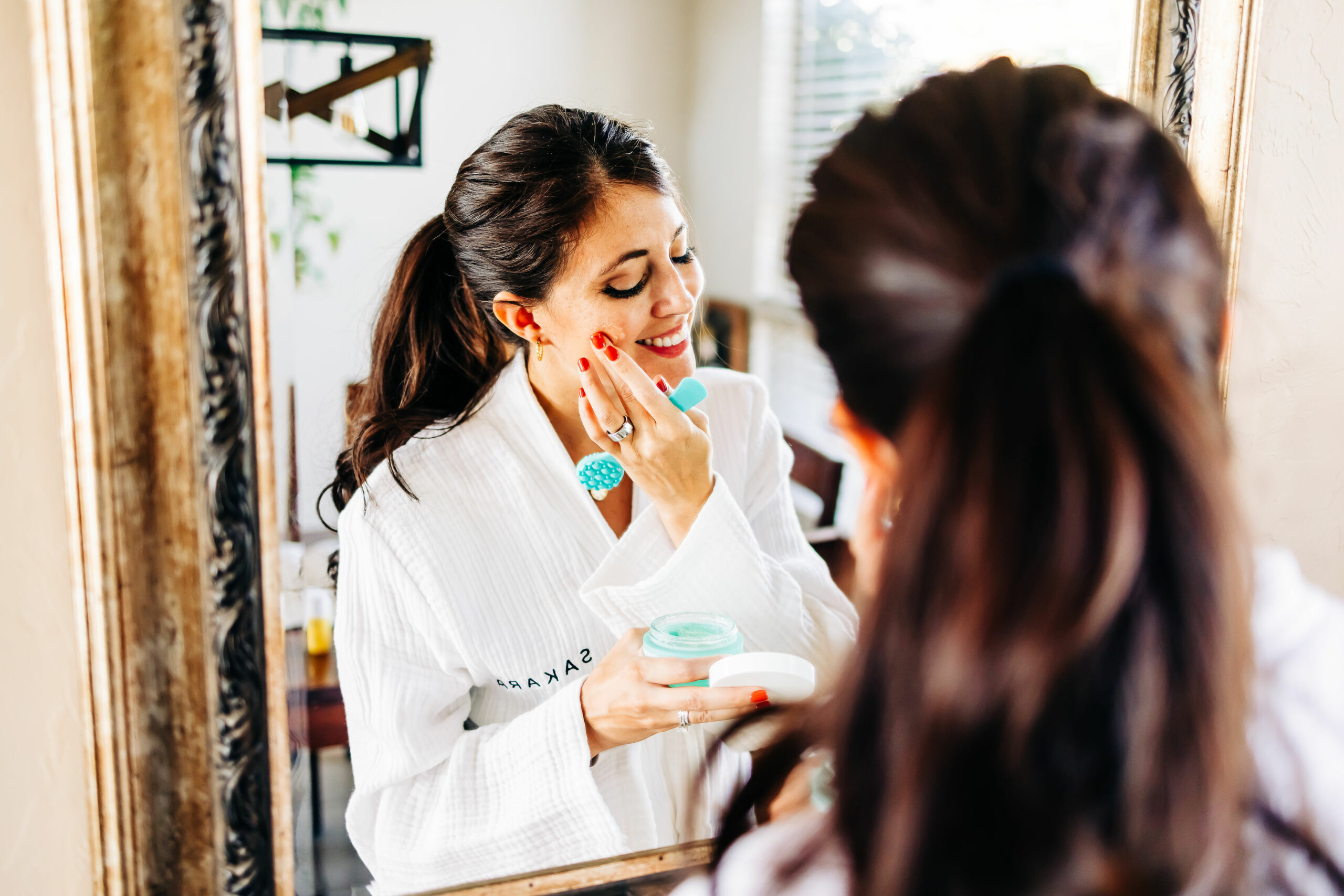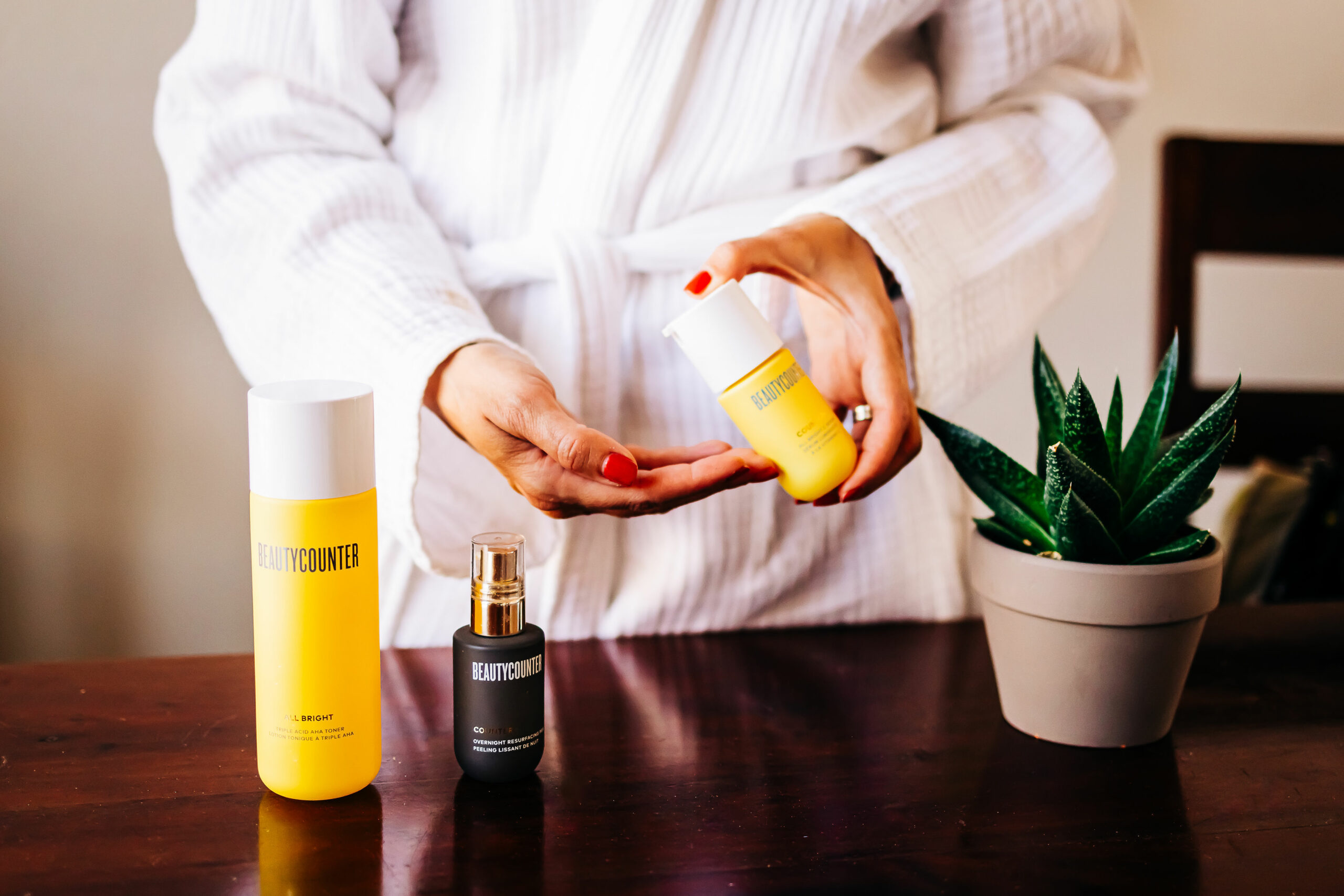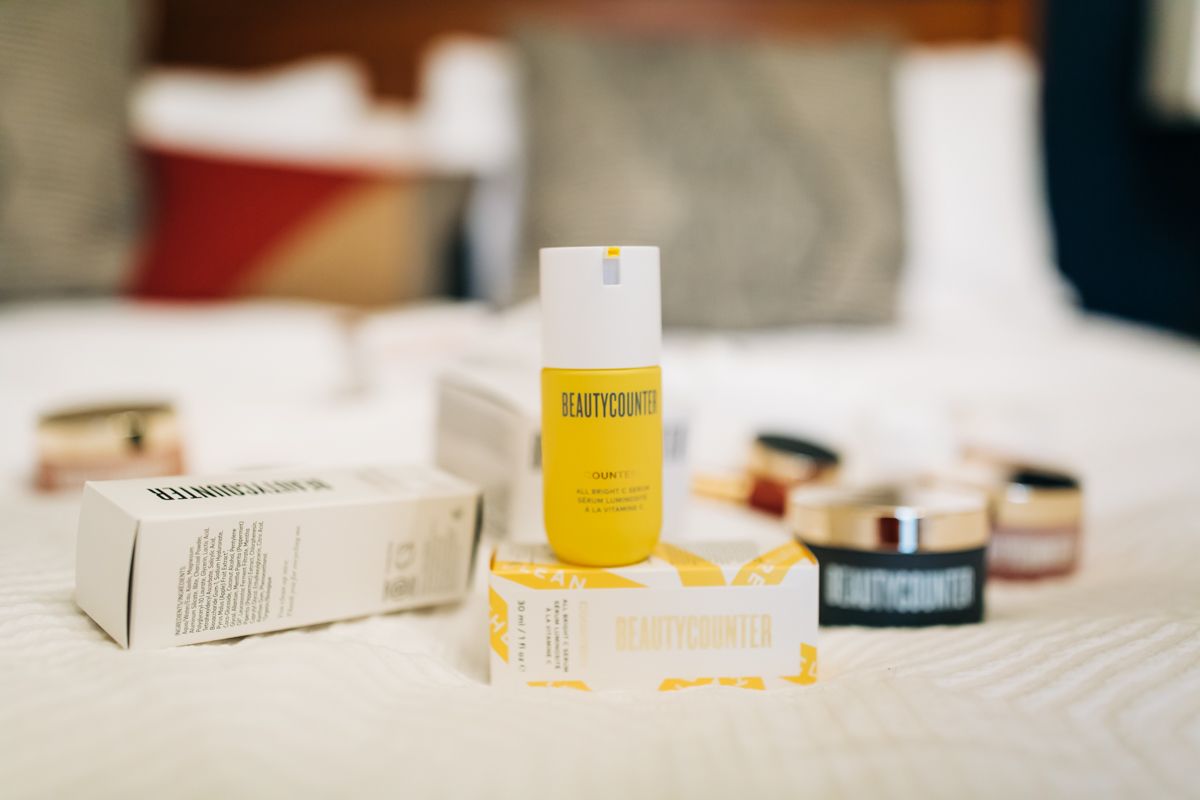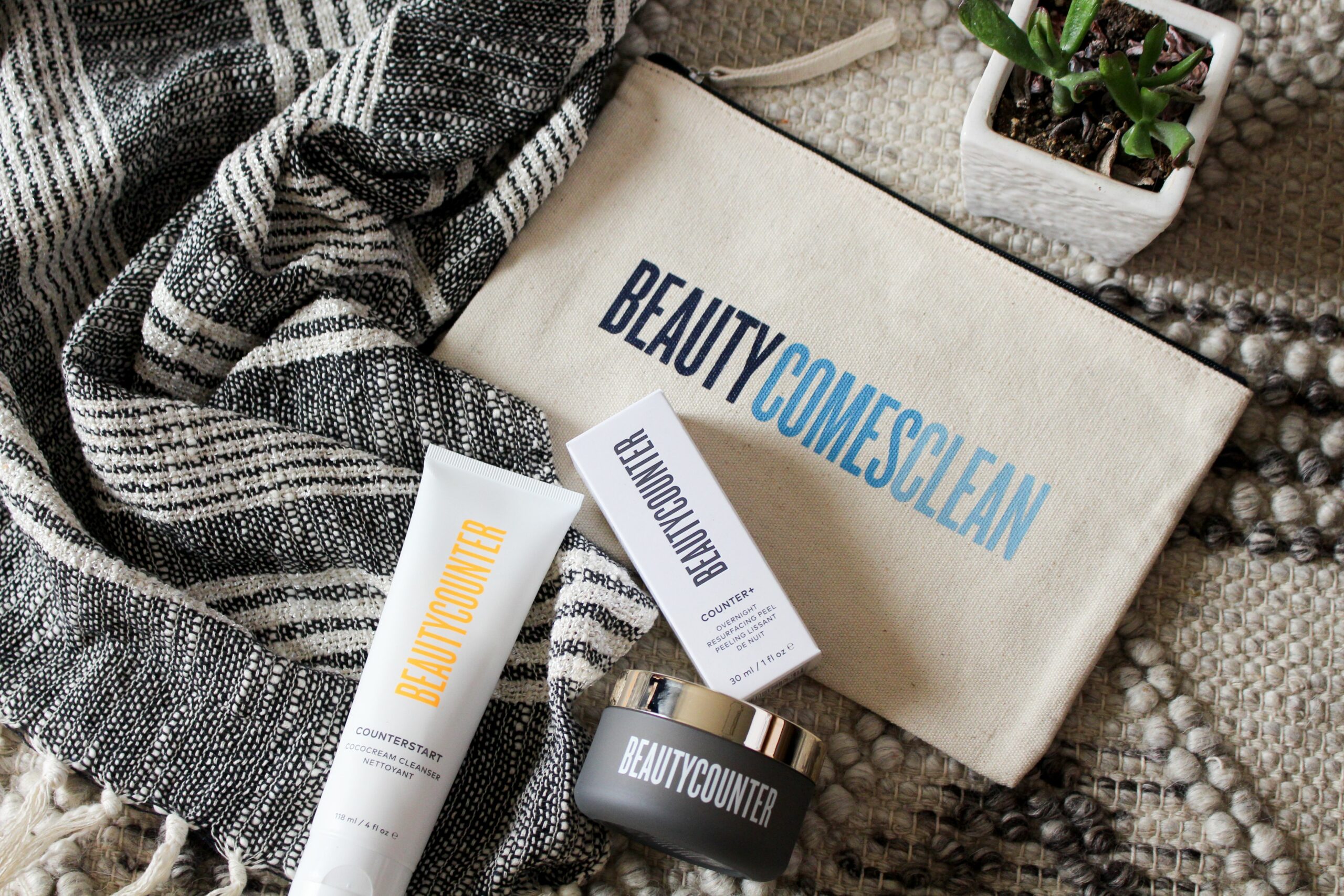Interested in switching to safer products? In this post, I’m sharing ingredients to avoid in your beauty products and why it’s important for overall health.
I’ll be honest, my journey to switch to safer personal care and beauty products started after my health journey began. I’ve dedicated most of my life to fitness and eating well, but I recently learned that what I put on my body is just as important as what I put on it.

Lack of control
Unlike the food industry, the beauty industry is unfortunately highly unregulated. The last major law governing this multi-billion dollar industry was passed in 1938 – that’s 80 years ago! Since then, thousands of chemicals have been introduced and companies can get away with sneaking toxic and potentially harmful ingredients into their products. Asbestos in makeup!? Terrible!
My journey to switch to safer products for myself and my family has been slow and steady. I linked arms with Beautycounter a few years ago because it’s a tremendous source of education and resources (not to mention the community aspect and prosperity leg of my business).

To regulate personal care products, the European Union is leading the way to ban about 1,400 ingredients; Canada blocks about 600… and the United States, 30! The FDA currently doesn’t have the authority to regulate what’s in our products, so it’s really up to individuals.
Once we know better, we can do better; By buying products with safe ingredients, we are voting with our dollar.
Ingredients to Avoid in Your Beauty Products
1. Parabens
Parabens are used in products with a high water content, such as shampoos, conditioners, cleansers, and moisturizers, parabens are endocrine disruptors, meaning they can affect the delicate balance of our hormones. They mimic estrogen in the body and can change the expression of our genes. Read more here about parabens and why they shouldn’t be in cosmetics.
2. Phthalates
These are linked to a variety of health problems, including behavioral problems, asthma, breast cancer, ADHD, neurological, behavioral and fertility problems. As with many harmful ingredients in cosmetics and skin care, the effects can be cumulative.
3. Fragrance
It is a trade secret in the industry and the word “fragrance” can be used to hide over 200 chemical ingredients. By calling it “fragrance” companies can easily hide known neurotoxins, carcinogens, allergens and hormone disruptors.
4. Formaldehyde
It is a preservative and is a known carcinogen. Like many things, it can have different effects and reactions, but can cause skin irritation, eye irritation and respiratory problems.
5. Oxybenzone
Oxybenzone is not only an ingredient that is harmful to us, but harmful to the earth and our precious ecosystems. Oxybenzone, commonly used in sunscreen, contributes to coral bleaching and damages the DNA of coral reefs. Hawaii was the first to ban the use of this type of sunscreen.
6. Heavy metals
Makeup often contains heavy metals such as lead, mercury and zinc. They’re used in everything from lipsticks to eyeliners — and they give off a metallic sheen.
Risks associated with heavy metals include cancer, endocrine disorders, developmental delays, and neurological disorders.
Sweet news! Beautycounter tests every batch of their color cosmetics 3x for heavy metals.
7. Talc
Talc, commonly found in loose powders, and powder-based makeup such as eyeshadows and blushes can be admitted if they contain asbestos! Safer alternatives include starches derived from corn, maize, arrowroot, tapioca, oats or baking soda.
8. Paraffins and petrolatum
These are long-term byproducts of oil refining used to make gasoline and other petroleum products…and yes, they’re likely hiding in your everyday body lotion. Alternative names include petroleum jelly, paraffin oil, or mineral oils—which often infiltrate lotions because of their moisturizing properties. The main health risks of paraffins and petrolatum come from improper processing processes, which can leave behind cancer-causing pollutants.

Switch to Safe
Once I learned about some of the major culprits and ingredients to stay away from, it became easier when choosing anything from shampoo and body lotion to toothpaste, deodorant and even my makeup. If I’m ever in question, I use the Environmental Working Group’s Skin Deep database and Healthy Living app to scan products for their safety ranking.
Why I choose Beautycounter time and time again; I can trust the products because of the company’s rigorous screening processes, testing, and ingredient sourcing and control. Beautycounter’s Never List is a growing list of over 1,800 ingredients that they exclude from all of their formulations.
As with all aspects of wellness, I don’t strive for perfection – but for progress. Small changes really add up over time. I don’t think it’s realistic to completely empty your drawers and cabinets to replace everything at once. Instead, I wait until something runs out and use that opportunity to replace it with a safer option.
If you’re interested in making a safe swap with your products, you can fill out this quick form and I’ll email you personalized recommendations.

Cheers to being safe!
xo
Gina
You may also like:


